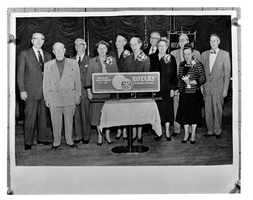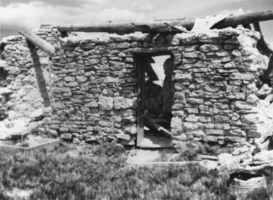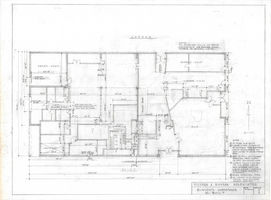Search the Special Collections and Archives Portal
Search Results

Charles Glover: copy photograph of Rotarians
Date
Archival Collection
Description
Photograph from the Frank Mitrani Photograph Collection (PH-00332).
Image

Tonopah Club and Ace Club, Tonopah: photographic print
Date
Archival Collection
Description
From the Nye County, Nevada Photograph Collection (PH-00221) -- Series III. Beatty, Nevada -- Subseries III.G. Reidhead Family
Image

Remains of the home of Jack Longstreet: photographic print
Date
Archival Collection
Description
From the Nye County, Nevada Photograph Collection (PH-00221) -- Series IV. Pahrump, Nevada -- Subseries IV.E. Ford Family. Another view of the home of Jack Longstreet. The home was destroyed by a flood in the following year.
Image
News segments on the Stratosphere's financial condition and marketing plan: video
Date
Archival Collection
Description
Local evening news segments discussing the Stratosphere's first quarter profit loss, stock price plunge, and possible bankruptcy. News segments discusses the Stratosphere's advertising plans to increase traffic flow and gaming revenue and also includes interviews with tourists, gaming analyst Anthony Curtis, and Stratosphere CEO Lyle Berman. Original media VHS, color, aspect ratio 4 x 3, frame size 720 x 486. From the Bob Stupak Professional Papers (MS-01016) -- Professional papers -- Audiovisual material -- Digitized audiovisual clips file.
Moving Image
B-roll footage for Pioneer Hotel and Gambling Hall in Laughlin, Nevada advertisements: video
Date
Archival Collection
Description
B-roll of Pioneer Hotel and Gambling Hall in Laughlin, Nevada. Boats pass by on the river, camera pans to a man and woman talking and standing by the water. Audio abruptly begins, and a woman is giving the couple direction as the camera rolls. Couple then appear on the beach, and the neon signs are visible as the sun begins to set; couple speak to another infront of Vegas Vic sign, then move to a boat on the river, and then ends with the couple talking inside a Pioneer Hotel room. Original media U-matic S, color, aspect ratio 4 x 3, frame size 720 x 486. From the Production Company Audiovisual Collection (MS-00930) -- Digitized audiovisual material file.
Moving Image

Binion's Horseshoe Garage: architectural drawing
Date
Archival Collection
Description
From the Homer Rissman Architectural Records (MS-00452). Written on the image: "Garage. Rissman & Rissman Associates. Binion's Horseshoe as-built. Date 9-20-67. Sheet #1".
Image
Rodman, Kitty, 1925-2014
Kitty Rodman was born on July 5, 1925 in Richmond, Virginia. Before she relocated to Las Vegas, Nevada and became known as the “First Lady of Construction,” she worked as a payroll supervisor for a government construction project in the early-to-mid 1940s where she gained experience in construction administration.
Person
Harry Floyd Alter Photograph Collection
Identifier
Abstract
The Harry Floyd Alter Photograph Collection (1905-1916) is comprised of black-and-white photographic prints and negatives. The images depict scenes in Las Vegas, Nevada, including the Las Vegas Ranch, the Arizona Club, and baseball teams and fields. Also included are images of Harry Floyd Alter and his friends.
Archival Collection
Irma McGonagill Papers
Identifier
Abstract
The Irma McGonagill Papers (1907-1970) document her life in Tonopah, Nevada. The collection includes handwritten notes about her life in Tonopah, a stock certificate from the Silver Bow mine, and correspondence with Nanelia S. Doughty about life in Tonopah.
Archival Collection
Jerry Tarkanian Memorabilia
Identifier
Abstract
The Jerry Tarkanian Memorabilia (1990-1992, 2013) contains two plaques, newspaper clippings, two magazine articles, and one photograph.
Archival Collection
